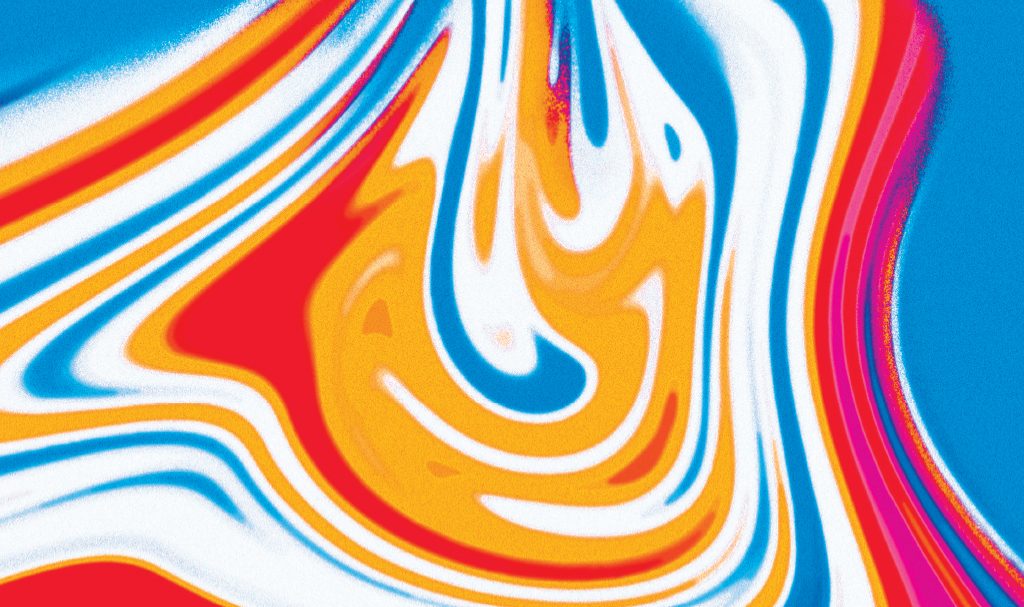
AsianScientist (Apr. 26, 2024) – In 2023, many Asian countries including India, Malaysia, Nepal and Japan witnessed severe heatwaves. These heatwaves melted road surfaces, lowered air quality and caused deaths from heatstroke. But the impact of heatwaves was not just limited to land, they impacted marine biodiversity too.
Although researchers are still figuring out what exactly qualifies as marine heatwave, it is broadly understood as periods of unusually high sea surface temperature. Like terrestrial heatwaves, marine heatwaves are defined by comparing temperature ranges that are considered normal for a certain region during a particular time of the year. One widely accepted definition of a marine heatwave is when the temperature over five or more days continues to be among the top 10 percent hottest days in the last 30 years for that location. Lasting anywhere from a few days to several months, marine heatwaves can have irreversible impact on oceans and the ecosystems they support.
“When marine heatwaves hit, many fish species that are territorial either die or become smaller and weaker, said Rohan Arthur, a marine biologist, in an interview with Asian Scientist Magazine. Arthur works at the Nature Conservation Foundation, a non-profit headquartered in Mysore, India. “That is when you start seeing impacts on local fishing communities that depend on those fish,” he added.
The data collected by scientists who have been tracking ocean temperature using various methods including satellites for several decades, shows that human-induced climate change—not the natural climate variability of the oceans—is the main driver of marine heatwaves. These heatwaves also exacerbate the consequences of the gradual warming of the oceans.
An August 2023 study published in Scientific Reports analyzed temperature data of the Bay of Bengal between 1982 and 2021. The study found that while there were two or three marine heatwaves annually during the period before 2010, the bay has been averaging over five heatwaves every year since then. The longest of these heatwaves lasted 91 days and occurred in 2021.
The findings of this study are supported by other similar studies; a 2018 analysis of marine heatwaves between 1925 and 2016 published in Nature Communications reported that both the frequency and intensity of marine heatwaves are increasing across the world. The International Union of Conservation of Nature warns that marine heatwaves will also trigger extreme weather events such as floods as well as cyclones and wildfires.
But arriving at a clear definition of marine heatwaves is complicated by another phenomenon occurring at the same time: the gradual warming of oceans. In a 2023 commentary published in Nature, researchers stated that it is important to clearly define marine heatwaves soon to avoid miscommunication.
While oceanographers continue to debate where the threshold lies for a marine heatwave, what remains undisputed is that they are harming the health of oceans and those that depend on them.
THE PHYSICS OF MARINE HEATWAVES
A 2021 report from the Intergovernmental Panel on Climate Change said that the Indian Ocean is warming faster than other oceans across the globe. Because of that, Asian countries are at significant risk from marine heatwaves in the future. Left unchecked, these events can have irreversible impacts on Asia’s marine food webs and fisheries.
Minimizing this damage would require urgent climate action, particularly reducing fossil fuel emissions. Even if the warming is limited to 1.5 degrees Celsius above pre-industrial limits, marine heatwave days are estimated to increase by a factor of 16 by the end of the century.
Marine heatwaves take shape in three main ways. “One is the radiation from the atmosphere,” said Shikha Singh, an oceanographer at the Indian Institute of Tropical Meteorology. “The second is the horizontal movement of water, which can bring warm water from one place and accumulate it at another place.”
The third factor is vertical processes in the ocean. Like in a boiling pot, heat rises from the bottom of the ocean due to convection. “But the first two reasons are strong enough to cause heatwaves,” added Singh. The second factor is particularly important as cyclical weather patterns like El Niño move and concentrate warmer water in specific regions, raising the average surface temperature of those regions.
The effects of El Niño as well as their frequency is being amplified by climate change. For example, in Japan, El Niño caused terrestrial and marine heatwaves throughout the summer and autumn of 2023. Marine heatwaves also compound other stresses such as increase in acidity and depletion of oxygen in the water, particularly closer to the coasts. In a vicious cycle, these then hurt the production of biological matter and nutrient-cycling capabilities of the oceans.
IMPACTS ON MARINE BIODIVERSITY
Marine species that thrive in a narrow temperature range or are localized to a region are more badly affected by marine heatwaves because they are not able to tolerate sharp increases in temperature, leading to their population collapse.
Similarly, marine heatwaves are also driving some fish species farther away to cooler waters, affecting the livelihood of fishing communities. A 2020 study published in Limnology and Oceanography showed that heatwaves can also cause marine animals to produce fewer or lower-quality gametes.
Like fish, corals are also adversely affected although they have varying degrees of resilience to marine heatwaves depending on their species and location. “Coral bleaching happens when abnormally warm waters last for longer periods,” said Aletta Yñiguez, professor, Marine Science Institute, University of the Philippines Diliman, Philippines.
Agreeing with Yñiguez, Arthur added, “You wouldn’t expect to see an immediate consequence of a heatwave on coral systems. But what happens are follow-on consequences that play themselves out over several years and decades.” Since 1999, Arthur and his colleagues have been documenting the outcomes of ocean warming on coral reef ecosystems in the Indian archipelago of Lakshadweep in the Arabian Sea.
Generally, when temperatures return to normal, coral reefs can recover. The recovery is protracted and takes 10 to 15 years. “But if heatwaves come more frequently than that, the reef won’t get time to recover,” said Arthur.
Marine heatwaves also affect the seafloor in the shallower part of the oceans known as the continental shelf, causing the destruction of kelp forests and seagrass beds. Kelp and seagrass are known to retain massive stocks of carbon in the oceans. Their destruction releases carbon dioxide back into the atmosphere, worsening atmospheric warming.
BUILDING RESILIENCE
Lakshadweep, an archipelago of about three dozen youngislands formed by coral debris, is one of the places at the frontier of how marine heatwaves threaten coastal communities. Parali 1, one of the uninhabited islands in the archipelago, vanished in 2017 because of coral bleaching and coastal erosion.
Other islands in this archipelago are currently under severe climate stress. In a 2018 study published in Coral Reefs, Arthur and his colleagues found that coral cover in the Lakshadweep islands shrunk from 51.6 percent to 11 percent between 1998 and 2017.
If coral degradation and coastal erosion continue, other islands could meet Parali 1’s fate. “This calls into question how long these islands are going to remain habitable,” Arthur stressed.
Lakshadweep’s economy is heavily reliant on fishing. As coral health declines, it will impact fish that reside in the corals, which in turn will have consequences on commercially important fish species. An upsurge in reef fishing is also hurting the ability of corals to recover, leading to a vicious feedback loop that is likely to decimate the regions’ fish populations in the future, particularly affecting small fisherfolk.
Although climate models are becoming better at predicting marine heatwaves, they can only help with short-term planning and management at the local level. Long-term responses would require societal or biological adaptations.
Better insights into marine heatwaves and how different species cope with them will improve fisheries’ resilience. For example, better marine heatwave projections could guide limits on fishing or search for alternative species that could be farmed. If certain commercially viable species do well during heatwaves, fishing communities could plan to focus on them during those periods.
Yñiguez said that “there is a need to discuss alternative livelihoods for coastal communities or other responses to mitigate the socioeconomic impacts of marine heatwaves on ecosystems.”
—
This article was first published in the print version of Asian Scientist Magazine, January 2024.Click here to subscribe to Asian Scientist Magazine in print.
Copyright: Asian Scientist Magazine.
Disclaimer: This article does not necessarily reflect the views of AsianScientist or its staff.

